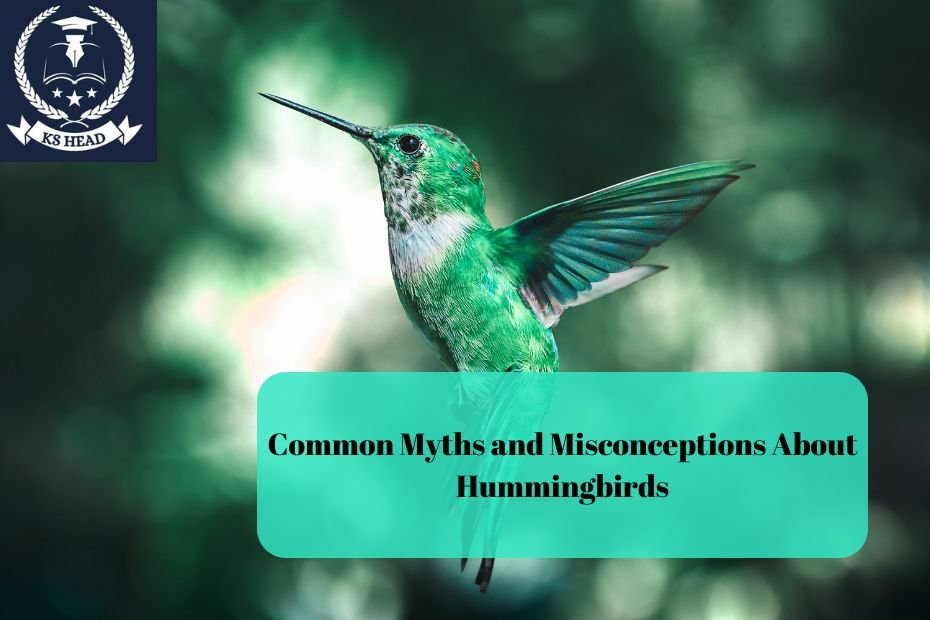Hummingbirds are among the most fascinating creatures on the planet. With their iridescent feathers, incredible flying abilities, and unique feeding habits, these tiny birds capture the hearts of birdwatchers and nature enthusiasts alike. However, despite their popularity, many myths and misconceptions surround them. This article aims to debunk some of these myths, providing you with accurate information about hummingbirds and enhancing your appreciation for these remarkable birds.
1. Hummingbirds Can Fly Backward
Myth: Hummingbirds are the only birds that can fly backward.
Fact: While it is true that hummingbirds can fly backward, they are not the only birds capable of this maneuver. The unique ball-and-socket joint structure in their shoulders allows them to have an incredible range of motion, including backward flight. However, other birds, such as certain species of pigeons, can also maneuver in ways that allow for backward flight, albeit less proficiently than hummingbirds.
Why This Matters
Understanding that hummingbirds are not the only birds with this ability highlights their unique anatomy and flying skills without overstating their exclusivity. Appreciating their capabilities in the context of avian behavior enriches our understanding of bird diversity.
2. Hummingbirds Are Always Alone
Myth: Hummingbirds are solitary creatures that do not form social bonds.
Fact: While hummingbirds are often seen alone, especially when feeding, they can exhibit social behaviors. Many species gather at food sources, such as nectar-rich flowers or hummingbird feeders, and some even engage in aerial displays to establish dominance or attract mates. While they are not flocking birds, they can interact and coexist in shared spaces.
Why This Matters
Recognizing that hummingbirds can exhibit social behaviors helps dispel the notion that they are entirely solitary. This understanding can deepen our appreciation for their interactions, especially during migration when they may travel in small groups.
3. Hummingbirds Are Drawn to Sugar Water Alone
Myth: Hummingbirds only feed on sugar water and nothing else.
Fact: While hummingbirds are indeed attracted to sugar water solutions, their diet is not limited to nectar. They also consume small insects and spiders for protein, essential for their growth, reproduction, and energy needs. The protein found in insects is vital for muscle development and overall health.
Why This Matters
This myth underscores the importance of providing a balanced habitat for hummingbirds. While nectar feeders are essential, incorporating native plants that produce flowers and insects can create a more conducive environment for their survival.
4. All Hummingbirds Migratory Habits Are the Same
Myth: All hummingbirds migrate in the same way and to the same locations.
Fact: There are over 300 species of hummingbirds, and their migratory patterns vary significantly. While some species, such as the Ruby-throated Hummingbird, migrate long distances (up to 3,000 miles) from North America to Central America, others may have shorter or more localized migratory patterns. Additionally, not all species migrate; some remain in their territories year-round if conditions allow.
Why This Matters
Understanding the diverse migratory behaviors of hummingbirds can help bird enthusiasts plan better for their sightings and conservation efforts. It also highlights the adaptability of different species to their environments.
5. Hummingbirds Have No Sense of Smell
Myth: Hummingbirds rely solely on sight and have no sense of smell.
Fact: While it is true that hummingbirds primarily rely on their excellent vision to locate food sources, they do have some capacity to detect certain odors. Research has shown that hummingbirds can use scent to identify food sources, particularly when foraging in flowers. Their ability to perceive certain scents may help them locate specific types of nectar-rich flowers.
Why This Matters
This myth diminishes the complexity of hummingbird behavior and sensory perception. Acknowledging their sense of smell adds depth to our understanding of how they interact with their environment and find food.
6. Hummingbirds Are Attracted to Red Colors Only
Myth: Hummingbirds are only attracted to red flowers and feeders.
Fact: While it is true that many hummingbird feeders are designed with red colors to attract these birds, they are not exclusively drawn to red. Hummingbirds are attracted to various bright colors, including orange, pink, and purple. They are also attracted to certain flower shapes and sizes, which can influence their foraging behaviors.
Why This Matters
This misconception can lead to oversimplified approaches to attracting hummingbirds. By understanding that they are drawn to a wider range of colors, gardeners and bird enthusiasts can create more diverse and inviting habitats.
7. Hummingbirds Have No Natural Predators
Myth: Hummingbirds are at the top of the food chain and have no natural enemies.
Fact: While hummingbirds are small and agile, they do have natural predators. Larger birds, such as hawks, shrikes, and some species of jays, can prey on hummingbirds. Additionally, snakes and certain insects may pose threats to their nests and young. Like all wildlife, hummingbirds play a role in a complex ecosystem with various predators and prey relationships.
Why This Matters
Understanding that hummingbirds have predators emphasizes their role in the ecosystem. It also highlights the importance of maintaining biodiversity and habitat health to support all species within the food chain.
8. Hummingbirds Are Picky Eaters
Myth: Hummingbirds will only feed from specific types of flowers and will avoid others.
Fact: While hummingbirds do have preferences for certain flower shapes and colors, they are not as picky as often thought. They are opportunistic feeders and will visit various flowers that provide nectar, depending on availability. Factors like sugar concentration, flower shape, and availability can influence their choices.
Why This Matters
This myth can lead to a misunderstanding of hummingbird feeding behavior. Recognizing their adaptability allows gardeners to create a diverse range of flowering plants that can support these birds’ needs.
9. Hummingbirds Will Not Visit Feeders if They Are Contaminated
Myth: If hummingbirds do not come to a feeder, it must be contaminated or unclean.
Fact: While cleanliness is crucial for hummingbird feeders, various factors can influence their visitation. Seasonal changes, competition from other birds, or changes in food availability can affect hummingbird activity at feeders. It is essential to regularly clean feeders, but a lack of visitors does not necessarily indicate contamination.
Why This Matters
Understanding the various factors that influence hummingbird visitation helps set realistic expectations for birdwatchers and encourages them to maintain clean feeders without jumping to conclusions about contamination.
10. Hummingbirds Do Not Sleep
Myth: Hummingbirds are always active and do not require sleep.
Fact: Hummingbirds, like all birds, do need rest. They may enter a state called torpor during the night, a deep sleep that slows their metabolism and conserves energy. During this state, their heart rate drops significantly, and they become less responsive to external stimuli. This behavior is vital for their survival, especially in colder temperatures.
Why This Matters
Recognizing that hummingbirds do need sleep highlights their biological needs and behaviors, promoting a deeper understanding of their life cycle and the importance of providing a suitable habitat for rest.
Conclusion
Hummingbirds are captivating creatures with unique behaviors and adaptations that continue to intrigue bird enthusiasts and researchers alike. By debunking common myths and misconceptions about these remarkable birds, we can foster a greater appreciation for their role in the ecosystem and the importance of conserving their habitats. Whether you’re a seasoned birdwatcher or simply someone who enjoys watching these tiny wonders flit about your garden, understanding the truths about hummingbirds can enhance your experience and inspire others to learn more about these extraordinary creatures.
FAQs
- How can I attract hummingbirds to my yard?
- To attract hummingbirds, plant nectar-rich flowers, use hummingbird feeders filled with a sugar-water solution (1 part sugar to 4 parts water), and keep feeders clean.
- What is the best time of year to see hummingbirds?
- Hummingbirds are typically most active in spring and summer during their migration and breeding seasons. Depending on the species, some may arrive as early as March.
- Do hummingbirds migrate? If so, how far do they go?
- Yes, many species of hummingbirds migrate. For example, the Ruby-throated Hummingbird migrates up to 3,000 miles from North America to Central America.
- What should I do if a hummingbird is injured or stranded?
- If you find an injured hummingbird, contact a local wildlife rehabilitator or animal rescue for guidance. Avoid handling them unless necessary, as they can be stressed by human interaction.
- Can hummingbirds drink from a regular bird feeder?
- Hummingbirds prefer nectar feeders designed for their feeding habits. Regular bird feeders are typically not suitable, as they do not provide the sugar-water solution that hummingbirds need.

